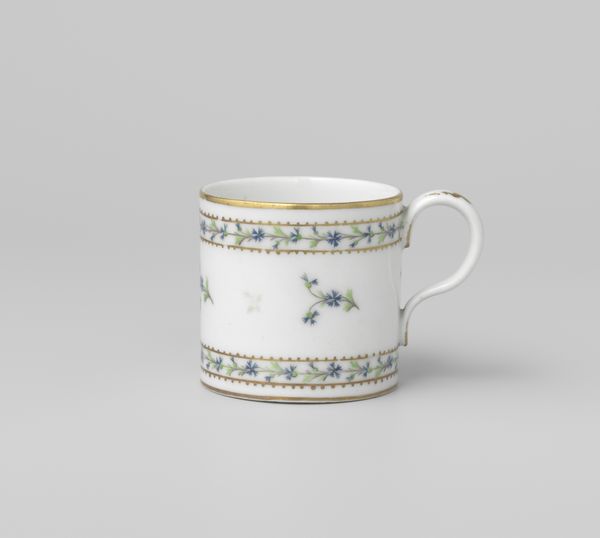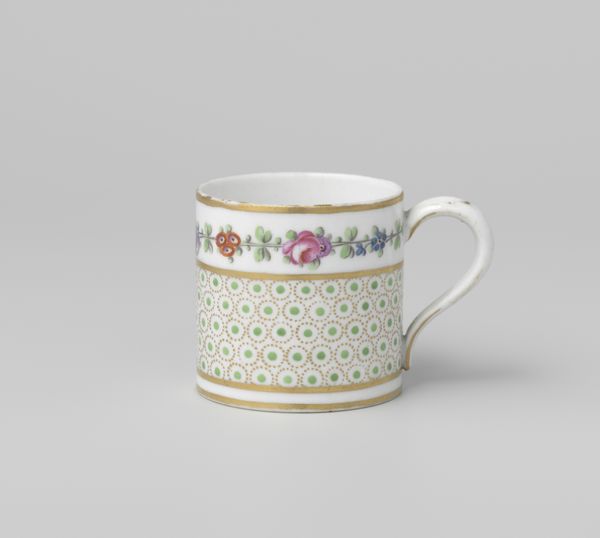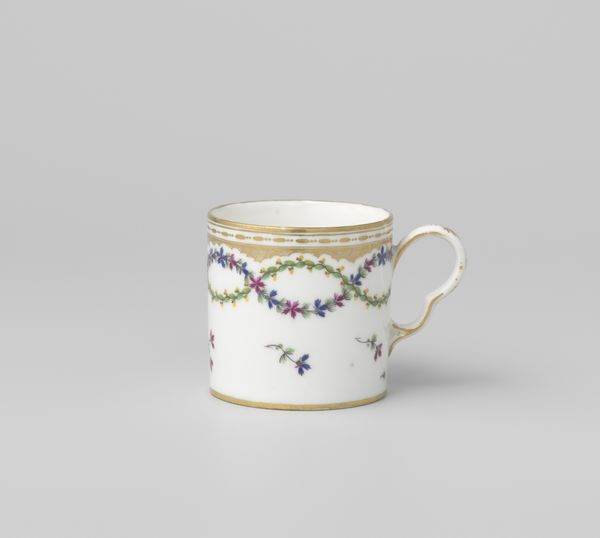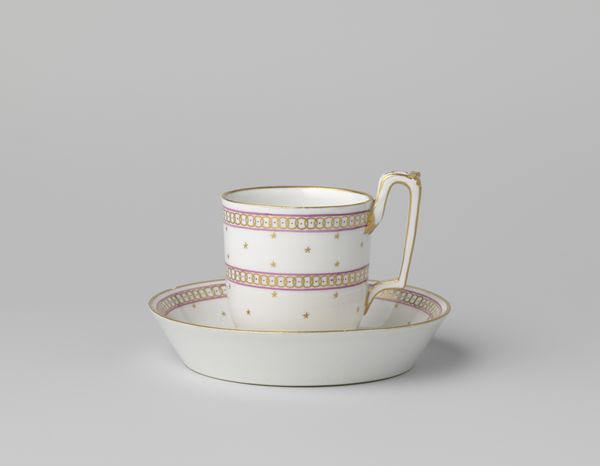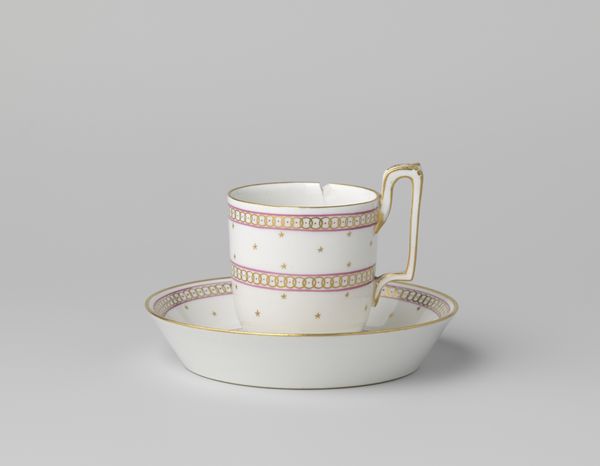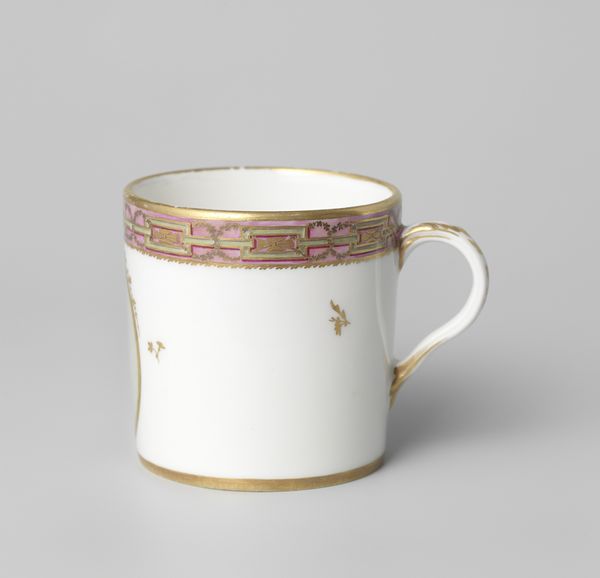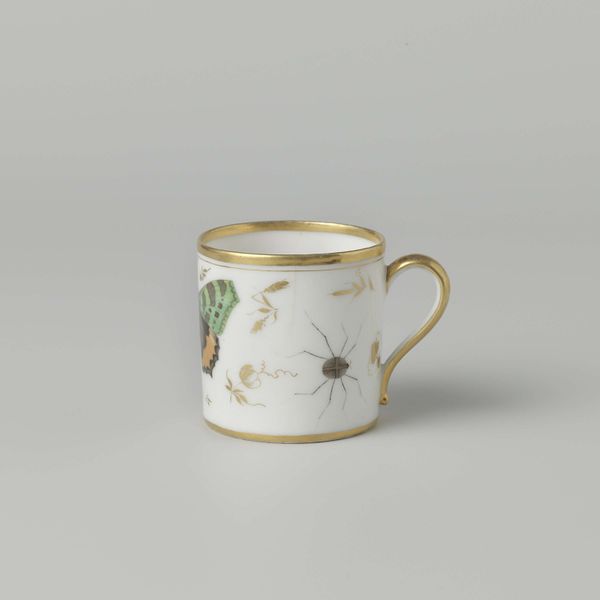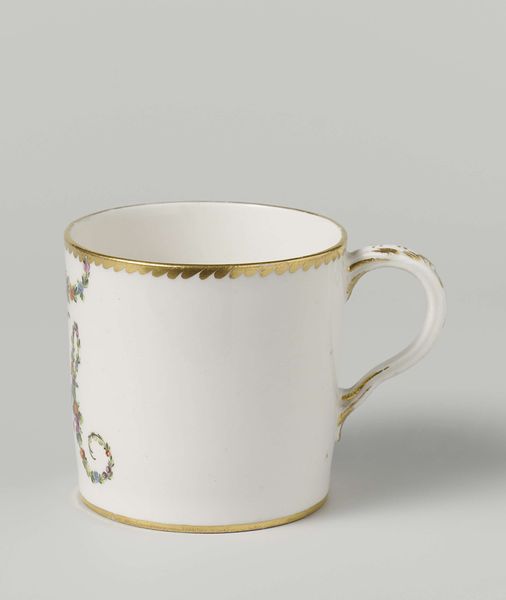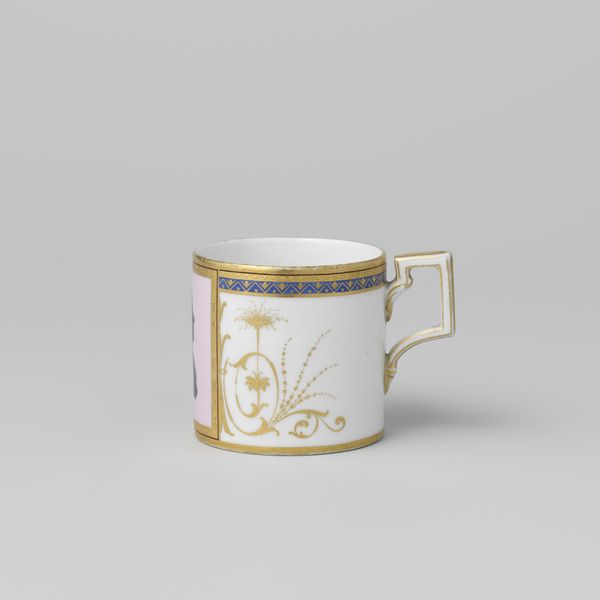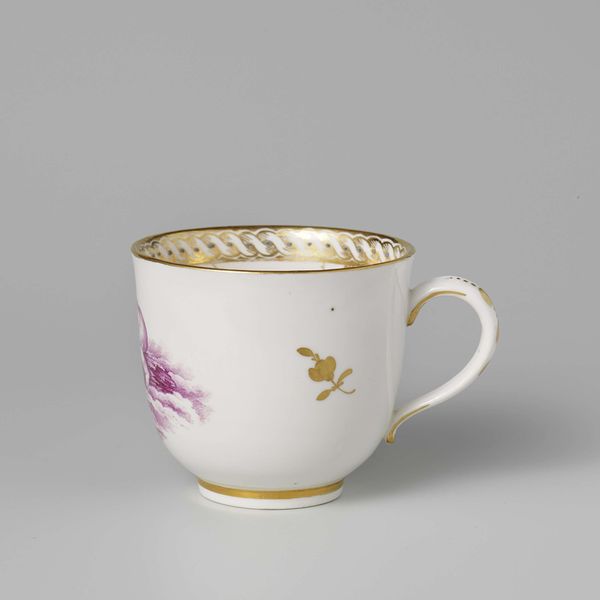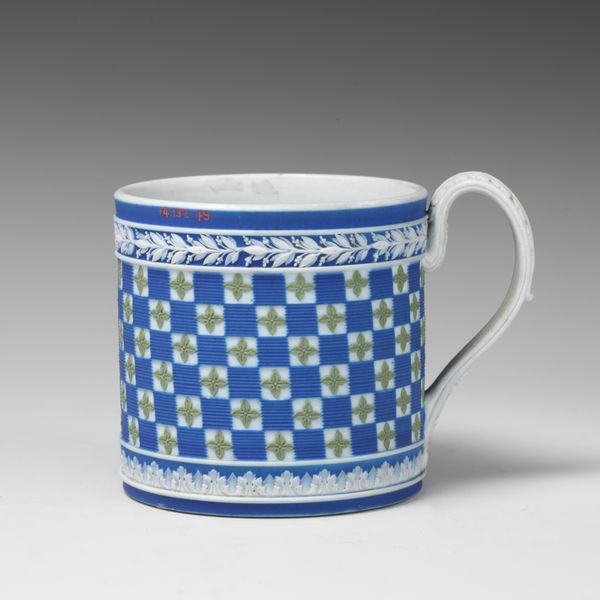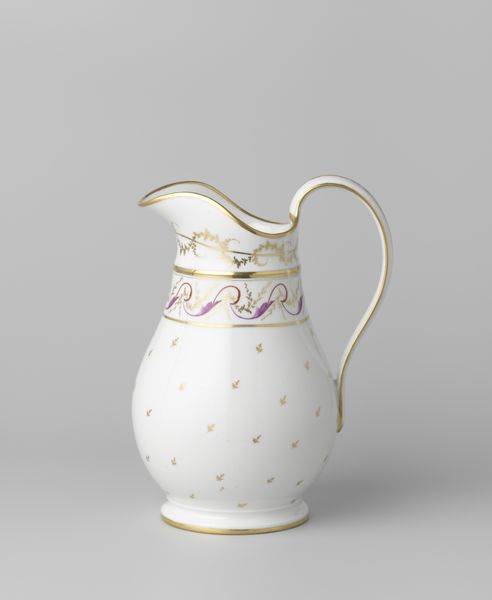
Dimensions: height 5.9 cm, diameter 6 cm, width 8.3 cm
Copyright: Rijks Museum: Open Domain
Editor: This is a porcelain cup, created between 1775 and 1790 in the Clignancourt workshop, decorated with lozenges in blue and green. It feels somehow both delicate and quite rigid because of the very precise pattern. What do you see when you look at this object? Curator: The precision is key, isn't it? Think about what a cup *means*. It's a vessel, yes, but also a ritual object. The lozenge pattern, almost like heraldry flattened and repeated, speaks to me of social codes. Each little cluster of dots and squares carries the weight of expectation. Editor: So, the pattern isn’t just decorative; it tells a story? Curator: Precisely. The regularity speaks to a desire for order, control, even in something as simple as enjoying a cup of tea. These colors—the soft blues and greens—aren't accidental either. They evoke landscapes, leisure, perhaps a longing for nature carefully contained within a domestic setting. Rococo loved artifice mimicking the organic, nature filtered through culture. Do you notice how that gilded trim *frames* the pattern? Editor: Like containing the natural world. So, enjoying a cup from this wasn’t just a personal moment, but almost a performance? Curator: In a way, yes. It was about displaying taste, belonging to a certain class. Every detail, even the way one held the cup, contributed to a complex visual language. Drinking from this object was also about identity and belonging. Editor: It’s amazing to consider that such a small item can hold so much cultural significance. Curator: Indeed! And perhaps we, handling it now, add another layer of meaning simply through our contemplation.
Comments
No comments
Be the first to comment and join the conversation on the ultimate creative platform.
